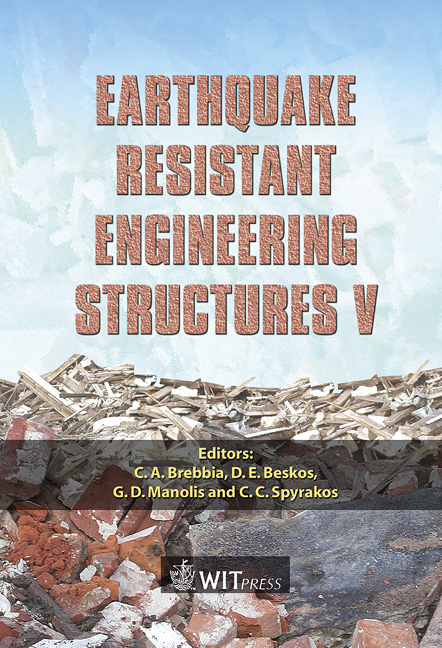Remarks Regarding FEMA 368 Seismic Analysis Guidelines
Price
Free (open access)
Transaction
Volume
81
Pages
10
Published
2005
Size
309 kb
Paper DOI
10.2495/ERES050701
Copyright
WIT Press
Author(s)
O. A. Mohamed
Abstract
The intent of this paper is to explore the recommendations of FEMA 368 on seismic analysis of buildings from a structural engineers’ perspective. The objectives are to: 1) illustrate the decision making process on the selection of a seismic analysis method in FEMA 368, 2) present a clear sequence of steps that will guide a structural engineer using FEMA 368 guidelines to determine the appropriate analysis method by calculating the appropriate quantities as they are needed, and 3) compare the response history analysis procedure to the equivalent lateral force procedure permitted in the body of FEMA 368 guidelines. Keywords: dynamic analysis, equivalent lateral force, response history analysis, story drift, FEMA368. 1 Introduction FEMA 368 is created with the sponsorship of the Federal Emergency Management Agency (FEMA). The purpose of this document is to provide guidance for the engineering community on the seismic resistant design of structures. FEMA publishes updated recommendations on seismic analysis and design every three years. It includes recommendations for structural and nonstructural building components. In the year 2000, the National Institute of Building Systems (NIBS) updated the Provisions for FEMA and the resulting document is FEMA 368. The complete title of the document is NEHRP Recommended Provisions for Seismic Regulations for New Buildings and Other Structures. Presidential Executive Order 12699 mandates that all federal buildings be constructed to mitigate seismic hazard and that NEHRP Provisions are considered to be the suitable design standard [4]. Analysis and design
Keywords
dynamic analysis, equivalent lateral force, response history analysis, story drift, FEMA368.





